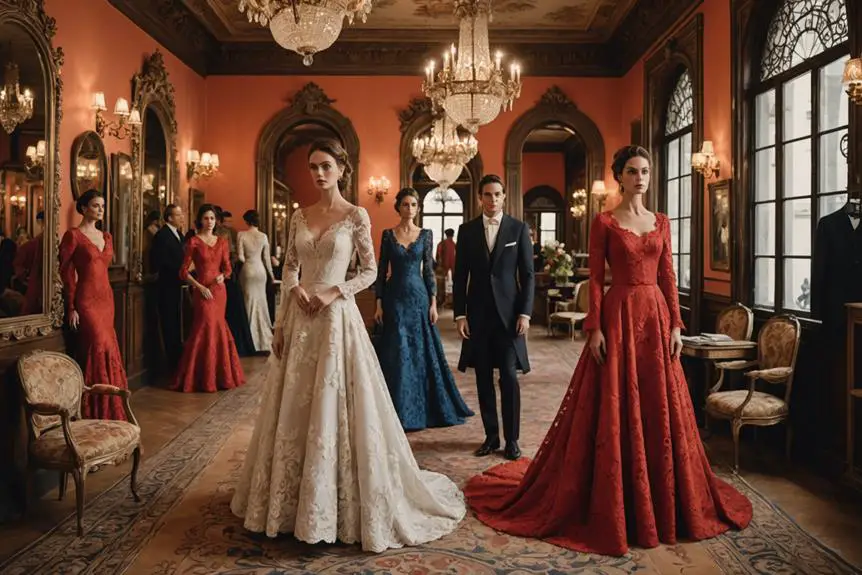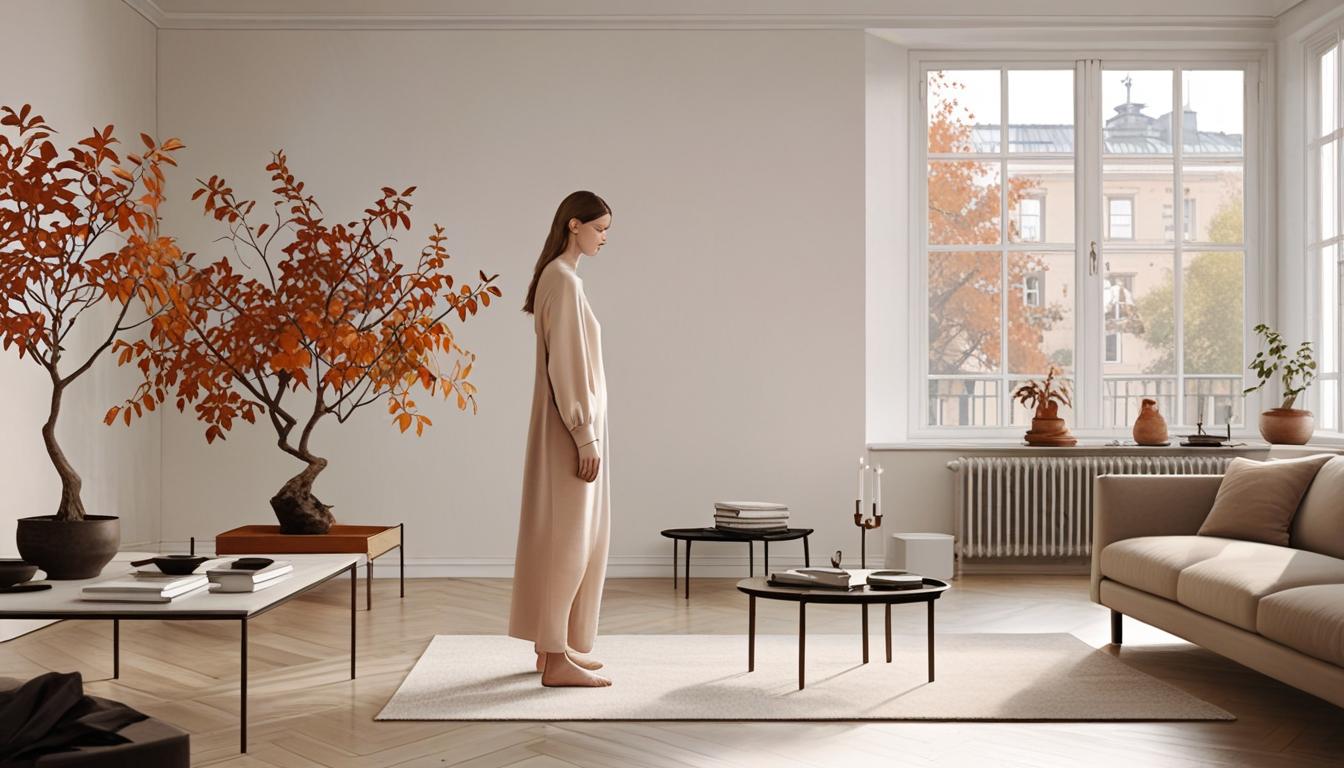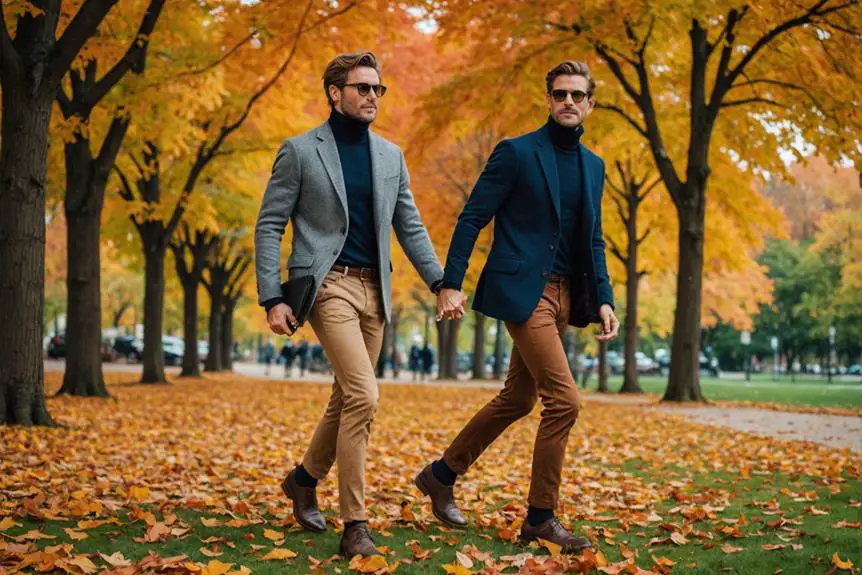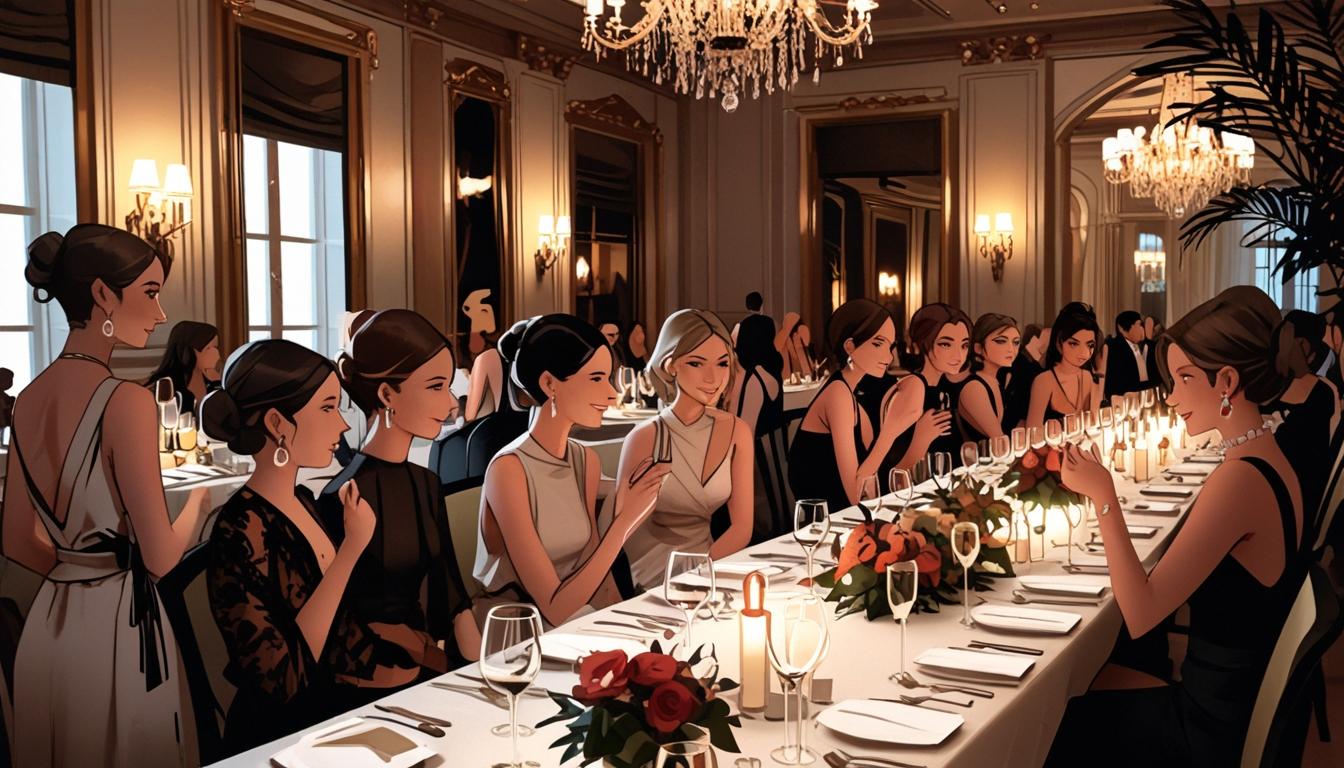When you explore the oldest Spanish fashion brands, you can't overlook Loewe, founded in 1846. This esteemed luxury brand is a beacon of artisanal craftsmanship, particularly in leather goods. Another iconic name is Cristóbal Balenciaga, who revolutionized women's fashion with his innovative silhouettes. Don't forget about Manolo Blahnik, renowned for exquisite footwear since 1969, and Paco Rabanne, a pioneer of avant-garde materials. Each of these brands melds history with contemporary creativity, shaping Spain's vibrant fashion scene. Curiosity piqued? There's so much more to discover about the illustrious world of Spanish fashion!
Historical Overview of Spanish Fashion
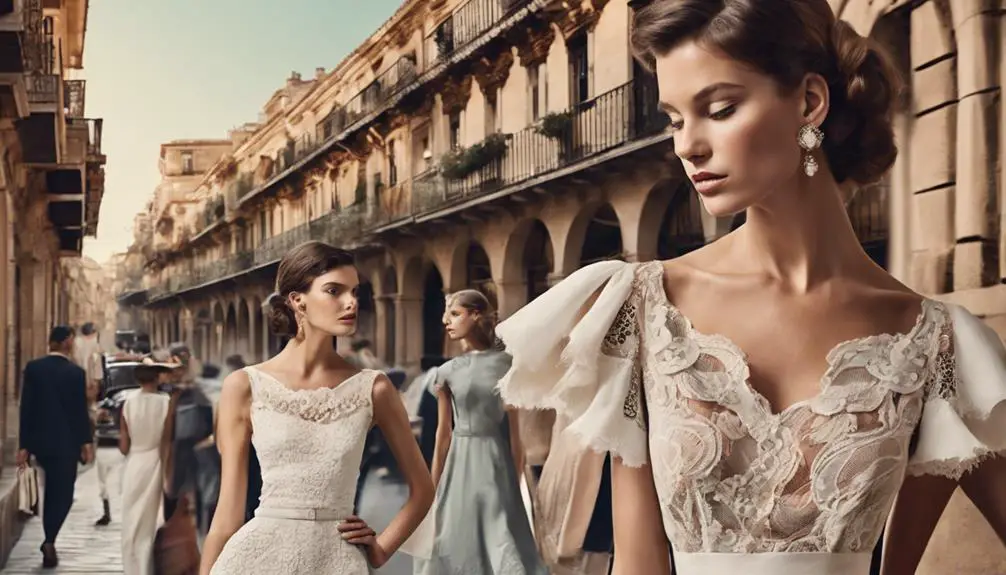
Spain's fashion landscape boasts a rich tapestry of history that's shaped by its influential designers and iconic brands. Spanish fashion has long been revered for its elegance and creativity, with over 100 fashion houses flourishing in the 20th century. This vibrant scene catered to both royalty and the bourgeoisie, establishing a strong foundation for haute couture that resonates even today.
One of the most significant figures in this narrative is Cristóbal Balenciaga, recognized as the most influential designer of his time. His innovative shapes and silhouettes transformed women's fashion, making him a pioneer whose legacy continues to inspire designers around the world. Alongside Balenciaga, brands like Loewe, founded in 1846, have played essential roles in defining Spanish luxury. Originally specializing in leather goods for Spanish royalty, Loewe stands as the oldest luxury brand in Spain, embodying craftsmanship and sophistication.
Moreover, notable designers such as Manuel Pertegaz and Elio Berhanyer have upheld their fashion legacies, further contributing to the historical significance of Spanish fashion. The establishment of Santa Eulalia in 1843 marked a pivotal moment, as it hosted the first runway show in 1920, showcasing the creativity and flair that characterizes Madrid's fashion scene.
As you explore deeper into the world of Spanish fashion, you'll uncover a history rich in artistry, innovation, and a commitment to excellence that continues to captivate audiences both domestically and internationally.
Iconic Spanish Fashion Brands
The legacy of Spanish fashion is embodied in its iconic brands, each contributing to the country's rich style narrative. These brands have not only shaped fashion trends but also highlighted Spain's unique artistry and craftsmanship. Let's explore some of the most influential names that continue to make waves in the fashion world.
| Brand | Founded |
|---|---|
| Loewe | 1846 |
| Delpozo | 1974 |
| Manolo Blahnik | 1969 |
| Paco Rabanne | 1966 |
Loewe, founded in 1846 in Madrid, is the oldest luxury fashion brand in Spain, initially specializing in leather goods for royalty. Under the innovative vision of Creative Director Jonathan Anderson since 2013, Loewe has become synonymous with artisanal craftsmanship and avant-garde designs.
Delpozo, established in 1974 by Jesús del Pozo, stands out in the haute couture scene, dressing notable figures such as First Lady Melania Trump, showcasing its sophisticated fashion aesthetic.
Manolo Blahnik, a name you'll recognize for luxury footwear, started in 1969 and has captivated fashion enthusiasts with his artistic shoe designs, famously featured in "Sex and the City."
Cristóbal Balenciaga, a master couturier from the 1910s, revolutionized women's fashion with his innovative silhouettes, dressing icons like Grace Kelly.
Influence of Spanish Designers
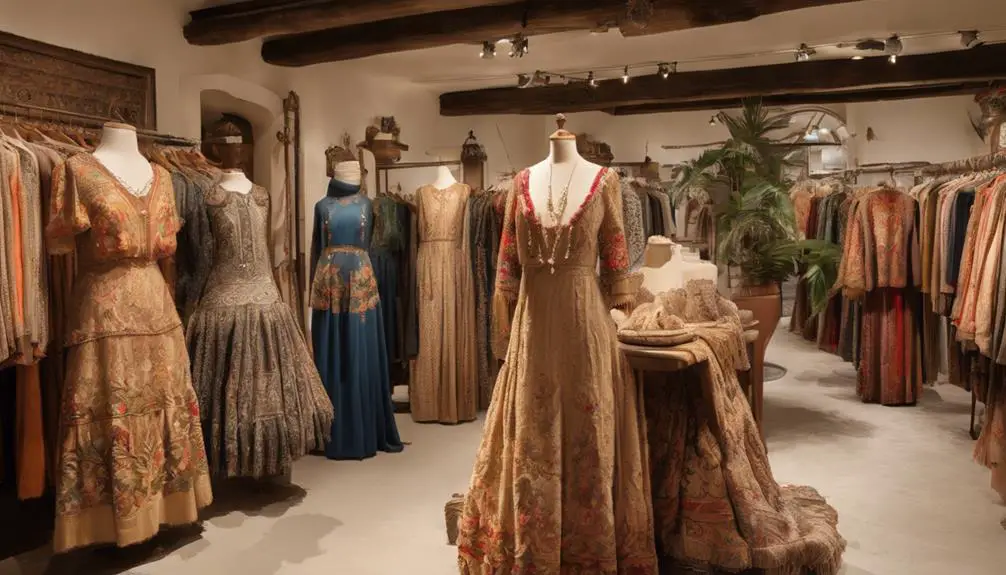
Spanish designers have made a remarkable mark on the fashion world, blending history with contemporary flair that continues to inspire. From Cristóbal Balenciaga's revolutionary silhouettes to Manolo Blahnik's iconic footwear, their innovative approaches have shaped both past and present styles. As you explore how these influential figures paved the way for modern design, you'll see just how deeply their legacies resonate in today's fashion landscape.
Historical Impact on Fashion
Throughout the 20th and 21st centuries, several influential designers have shaped the fashion landscape, leaving a lasting mark on both haute couture and everyday wear. Spanish fashion has seen remarkable figures like Cristóbal Balenciaga, dubbed the "master of us all," who revolutionized women's fashion with innovative shapes that inspired designers globally. Loewe, founded in 1846, stands as Spain's oldest luxury brand, renowned for its luxury leather goods, exemplifying artisanal craftsmanship and innovative designs that set industry standards.
Delpozo, established in 1974, blends traditional Spanish craftsmanship with modern aesthetics, influencing contemporary haute couture with its sophisticated styles. Paco Rabanne, who began his fashion house in 1966, paved the way for merging art and fashion, utilizing unconventional materials that transformed the design landscape. Additionally, designers like Manuel Pertegaz and Elio Berhanyer have upheld the haute couture legacy, dressing Spanish royalty and celebrities, thereby solidifying Spain's prestigious position in the global fashion scene.
These designers not only showcase Spain's rich fashion heritage but also highlight the historical impact that diverse, innovative approaches have had on the evolution of style and luxury, echoing through time and across borders.
Contemporary Design Innovations
Innovations in contemporary design often trace their roots back to the pioneering contributions of Spanish designers. Cristóbal Balenciaga, for example, revolutionized women's fashion with innovative shapes and silhouettes that still inspire today's fashion collections. Brands like Loewe, under the creative vision of Creative Director Jonathan Anderson, embrace modern aesthetics while infusing playful and experimental elements. Picture grass-covered coats and Minecraft-inspired fashion; these bold ideas showcase the brand's commitment to pushing boundaries in luxury fashion.
Delpozo stands out with its sophisticated designs, focusing on architectural silhouettes and intricate craftsmanship that elevate Spanish clothing to new heights. Meanwhile, the iconic footwear brand Manolo Blahnik continues to lead the luxury footwear scene, blending traditional shoemaking techniques with contemporary designs, resulting in unique and artistic shoe styles that appeal to modern consumers.
In addition, Paco Rabanne's avant-garde approach integrates unconventional materials and space-age aesthetics, paving the way for contemporary fashion innovations that challenge traditional norms. Together, these Spanish designers not only preserve their rich heritage but also enrich contemporary design, inspiring a new generation of fashion enthusiasts keen to embrace innovative shapes and styles.
Fashion Events in Spain
When you think of Spain's vibrant fashion scene, you can't overlook the major fashion weeks and cultural festivals that take place throughout the year. Events like the Mercedes-Benz Fashion Week Madrid not only spotlight renowned designers but also give up-and-coming talent a chance to shine, creating an electrifying atmosphere that celebrates creativity. With collaborations that enhance cultural exchange, these gatherings solidify Spain's reputation as a key player in the global fashion landscape.
Major Fashion Weeks
Spain's vibrant fashion scene comes alive during its major fashion weeks, where creativity and style collide on the runway. The Mercedes-Benz Fashion Week Madrid stands out as the most prominent event, showcasing both established and emerging designers biannually. The next edition, set for February 15-19, 2024, will feature over 40 designers presenting their collections to international audiences, highlighting the innovation that defines Spanish fashion.
Another key event is the Barcelona Bridal Fashion Week, which zeroes in on bridal fashion. This event attracts global buyers and media, showcasing renowned designers and the latest trends in this niche.
Here's a glimpse of what these fashion weeks offer:
| Event Name | Focus Area |
|---|---|
| Mercedes-Benz Fashion Week Madrid | Established & Emerging Designers |
| Barcelona Bridal Fashion Week | Bridal Fashion |
| Community Involvement | Collaboration with Local Institutions |
These events not only elevate Spain's reputation in the luxury fashion market but also promote community involvement, connecting local culture with contemporary trends. With each fashion week, you witness the vibrant tapestry of Spanish fashion woven with creativity and innovation, making it a must-see for fashion enthusiasts.
Cultural Fashion Festivals
Cultural fashion festivals in Spain are a vibrant celebration of style and creativity, showcasing the nation's diverse fashion landscape. At the forefront, you have the Mercedes-Benz Fashion Week Madrid, a biannual event that highlights both established and emerging talent, making waves in the fashion industry. Not far behind, Valencia Fashion Week champions local designers, contributing richly to Spain's cultural tapestry.
Then there's Barcelona's 080 Fashion Week, where you can immerse yourself in Catalonian fashion through innovative runway shows and enthralling presentations. Each festival plays a crucial role in promoting Spanish fashion, underscoring the creativity that flows through the country.
Malaga Fashion Week stands out by emphasizing sustainable fashion and local craftsmanship, presenting collections that honor eco-friendly practices while celebrating the heritage of Spanish fashion. These events often collaborate with cultural institutions, like Madrid's Botanical Gardens, to host engaging exhibitions that connect fashion with community, enriching the experience for everyone involved.
Attending these festivals not only allows you to witness the latest trends but also to appreciate the dedication to artistry and sustainability, making Spain a true hub of fashion culture.
Museums and Cultural Institutions

Exploring the rich tapestry of Spanish fashion is truly a journey through time, and museums play an essential role in this experience. These cultural institutions preserve and showcase the evolution of fashion, with each exhibition inviting you to discover the artistry and history behind stunning designs. For instance, the Museo del Traje in Madrid boasts an impressive collection of 30,000 historical garments and fabrics that narrate the story of Spanish fashion over the centuries.
In Barcelona, the Museu del Disseny features a permanent exhibition that spans from 1550 to 2015, capturing key developments in design and cultural influences that shaped the industry. Meanwhile, the Dalí Theatre-Museum in Figueres offers a unique blend of art and fashion history, displaying Salvador Dalí's jewelry and fashion collaborations that highlight the intersection of these creative fields.
Don't miss the Balenciaga Museum in Getaria, which houses an extensive collection of 1,200 items designed by the iconic Cristóbal Balenciaga. This museum not only showcases his innovative designs but also offers educational programs that explore his significant influence on modern fashion. Finally, the MOP Foundation in A Coruña focuses on fashion photography, hosting world-class exhibitions that celebrate fashion as an art form.
Visiting these museums provides a deeper appreciation for Spanish fashion, connecting you with its rich heritage and the artistic vision that continues to inspire designers today. Each visit is an opportunity to explore and celebrate the artistry that defines the fashion landscape.
Contemporary Retail Experiences
In today's fashion landscape, contemporary retail experiences have transformed into immersive journeys that go beyond mere shopping. Spanish fashion brands, like Casa Loewe in Madrid, set the stage with their first flagship store, which spans an impressive 32,000 square feet. This unique blend of luxury retail and historical elements not only enhances your shopping experience but also creates a sense of connection to the brand's rich heritage.
High-quality customer service is a cornerstone of these contemporary Spanish brands. Imagine walking into a store where personalized shopping experiences are the norm, with tailored services designed just for you. Brands such as Delpozo and Manolo Blahnik take it a step further, hosting special events and collaborations that result in engaging retail experiences for fashion enthusiasts.
Moreover, Spanish fashion brands are keenly aware of the importance of digital strategies. As e-commerce continues to rise, they've guaranteed a robust online presence to meet the growing demand for convenience and accessibility. Retail partnerships with prominent UK retailers like Fenwick and Matchesfashion further enhance their visibility in international markets, making it easier for you to access these exquisite brands.
With a focus on creating memorable experiences, contemporary Spanish brands are not just selling clothes; they're crafting a lifestyle that resonates with you. So, whether you're exploring a flagship store or browsing online, you're part of a vibrant community that celebrates creativity, quality, and the allure of Spanish fashion.
Frequently Asked Questions
What Is the Oldest Famous Fashion Brand?
You won't believe it, but the oldest famous fashion brand blends historical influences with brand heritage. Their iconic collections showcase craftsmanship techniques and cultural significance, reflecting fashion evolution, celebrity endorsements, market trends, and sustainable practices.
What Is the Biggest Spanish Fashion Brand?
You'll find Zara dominates the Spanish fashion scene with its rapid expansion and online retail strategy. Mango champions sustainability, while Massimo Dutti embraces Spanish craftsmanship and fashion collaborations, appealing to influencers in the luxury market.
Which Brand Is Famous in Spain?
In Spain, brands like Loewe and Manolo Blahnik stand out for their luxury accessories and traditional craftsmanship. You'll find modern adaptations and celebrity collaborations, blending cultural influences with iconic silhouettes in Spanish streetwear and sustainable fashion.
Is Loewe French or Spanish?
Did you know Loewe's revenue reached €1.3 billion in 2022? While it's owned by LVMH, its rich history, exquisite craftsmanship, and distinct Spanish design aesthetics firmly establish it as a Spanish luxury brand.
